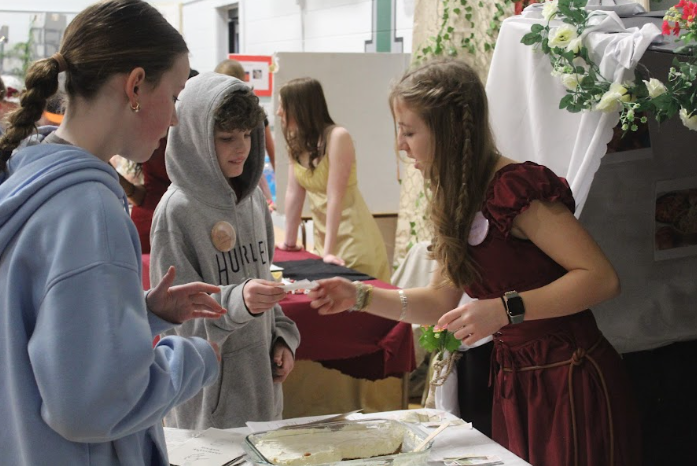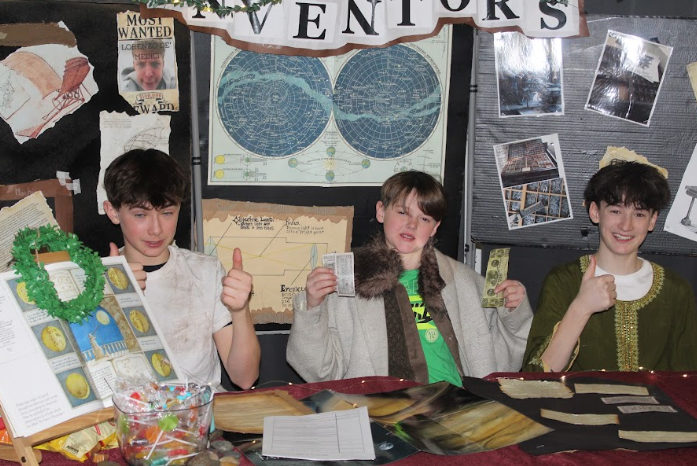The Renaissance Faire at Nickle School is a collaboration between realistic recreation and research. The current Grade 8 students explore and learn thoroughly from different perspectives on the time period, from the struggles of starvation of the peasants to the elaborate clothing of the nobles. Each student is given the choice on what they want to make their booth on, from Astronomy to Bakery. Working in small groups, the students create informational as well as visually appealing works of art. The Renaissance was the star of the world as we know it today, and essential information to understand how we got here and how our history has shaped society today.
At the Inventors booth, each student presented key categories or accomplishments of various inventors of that time period. They were able to effectively fuse intrigue, fact, and artistic talent together to create a truly phenomenal booth. On the walls of their booth, they have posted multiple different inventions such as the star chart and Leonardo da Vinci’s (sadly unsuccessful) flying machine. All in all, a truly memorable booth.
To enter the Faire, students had to spin a wheel to determine which social status they fell in. Two lucky students were crowned King and Queen, and were treated with respect and given significantly more leeway and rewards, such as a tart from the bakery. The King’s role during the Renaissance was to fairly and justly rule the land and cities, and to vanquish enemies before they were a threat to his country. His wife, the Queen, was more of a religious symbol and fostering strong national strength for her people. Both students got the chance to experience how royalty would’ve felt during this period.
The Bakery was a symbol of what food was consumed during and throughout the Renaissance period. Peasants ate mainly soup, mush and very limited grains. Royalty, such as Henry VIII of England and his wife and many children, were entitled to spoils such as meat and expensive or exceedingly rare fruits. During this simulation, students experienced firsthand the drastic differences in social status and livelihoods, often ending in incredibly different quality of life and mortality rates. The students made their own food, little cakes, to fully immerse the others in the experience.



